You can heal even when you cannot cure.
Abraham Verghese, MD, MACP, recalled the moment that idea became clear to him.
In the 1980s, as an infectious disease specialist, he worked at a clinic in Tennessee, caring for patients dying of AIDS. When he learned one of his patients had grown too weak to get to the clinic, he drove into the countryside to visit him at home. He worried it might be his last chance to see him.
“I was doing it more for my purposes than for any medical reasons,” he said. “When I got to his trailer, I found that my arriving had a profound effect on him and on the family. It seemed to help him feel that he was not abandoned, that I would be with him. And it helped the family come to terms with this illness.”
“As I was leaving that day, in this beautiful bucolic eastern Tennessee setting, I remember thinking, ‘Wow, this is what the horse-and-buggy doctor 100 years ago could do so powerfully.’ … They were very potent figures because of this ministerial quality.”
Dr. Verghese shared this story in a wide-ranging talk Wednesday, Oct. 5, to a standing-room only crowd at Spectrum Health Butterworth Hospital’s East Auditorium.
A professor of medicine and the vice chair for the Theory and Practice of Medicine at the School of Medicine at Stanford University, Dr. Verghese is known for his emphasis on empathy in medicine.
He also is the author of two memoirs and the New York Times bestselling novel, “Cutting for Stone.” In September, he received the National Humanities Medal from President Barack Obama.
In his presentation, Dr. Verghese answered questions from David Wohns, MD, MBA, the section chief of interventional cardiology of Spectrum Health Medical Group and medical director of cardiac cath labs at the Spectrum Health Frederik Meijer Heart and Vascular Institute.
Much of the discussion centered on the importance of the doctor-patient relationship, particularly the physical exam, in a fast-changing era of medicine.
Dr. Verghese led the development of the Stanford Medicine 25, a program devoted to promoting bedside exam skills in physicians. The physical exam “is an important ritual,” he said. “It’s the sealing of the physician-patient relationship.”
Amid progress in understanding disease and new ways of seeing the body, one thing remains timeless, he said.
“When a human being is suffering, they are more than a constellation of symptoms or molecular mechanisms gone awry,” he said. “There is a subtext to any illness and it is pretty much, ‘Daddy, Mommy, please help me. Please tell me it’s going to be all right.’ There is a subtext of wanting reassurance, of wanting to feel they are in the presence of people who care for them.”
On writing and medicine
The focus on details that Dr. Verghese learned as a physician also surfaces in his work as a writer. He noted both professions share the maxim, “God is in the details.”
He didn’t set out to be a writer, he said.
“I really see myself as having this enormous privilege of being in a position of being allowed into people’s lives at their most vulnerable moment,” he said. “That is still the great joy of my life. And the writing, I think, comes out of that.”
Asked what advice he would give to young physicians, Dr. Verghese discussed how focusing on the future can interfere with being in the moment. He borrowed a phrase from another writer, “Find beauty and be still.”
“To me, the most sacred moment in my day is the moment when I’m walking in to see a patient,” he said. “I try to remind myself that this is the moment when I leave everything else behind. I say a little inward prayer, ‘May I be of service.’”
He advises physicians, as they wash their hands before seeing a patient, to see that moment as a ritual, signaling that they are transitioning into a different, sacred space.
“There’s someone there who doesn’t really want to be there. And he’s looking to you for something that’s very important,” he said.
To help a patient in distress, physicians need to know themselves, he added.
“To know yourself, you really need to be present and very conscious of the effect your persona has on the patient,” he said. “Find beauty. Be still. And there is never a more beautiful moment than that moment of entering with the patient.”
Dr. Verghese also spoke Tuesday evening at Frederik Meijer Gardens & Sculpture Park as the inaugural speaker in the Physician as Writer lecture series.
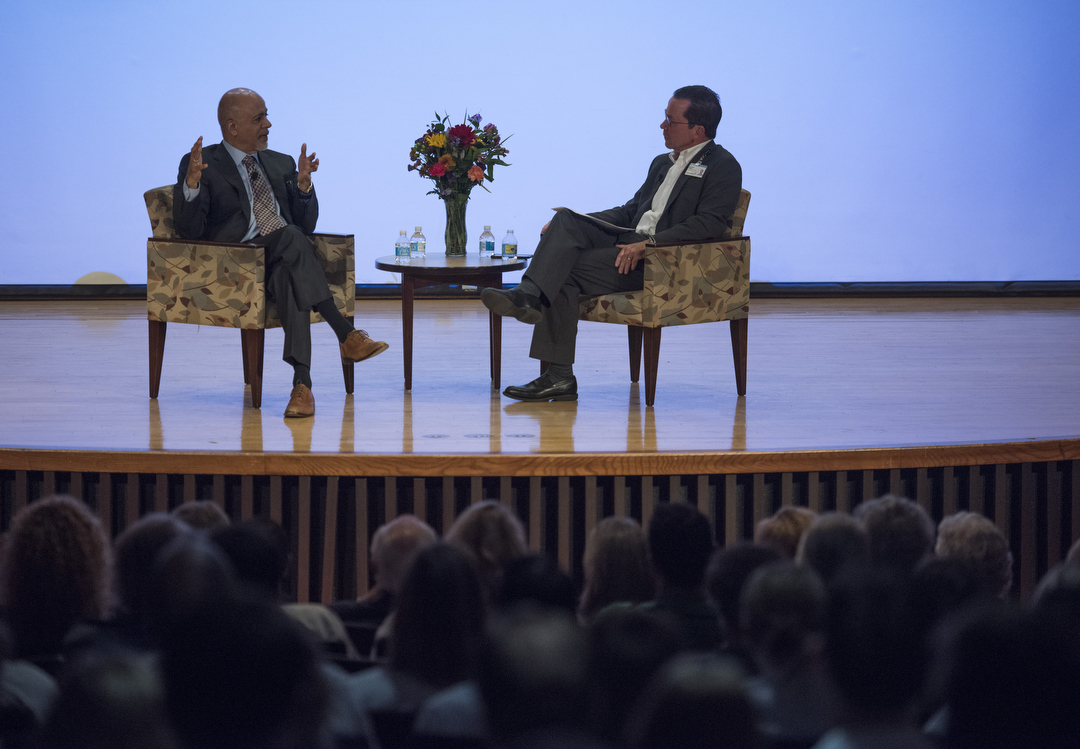


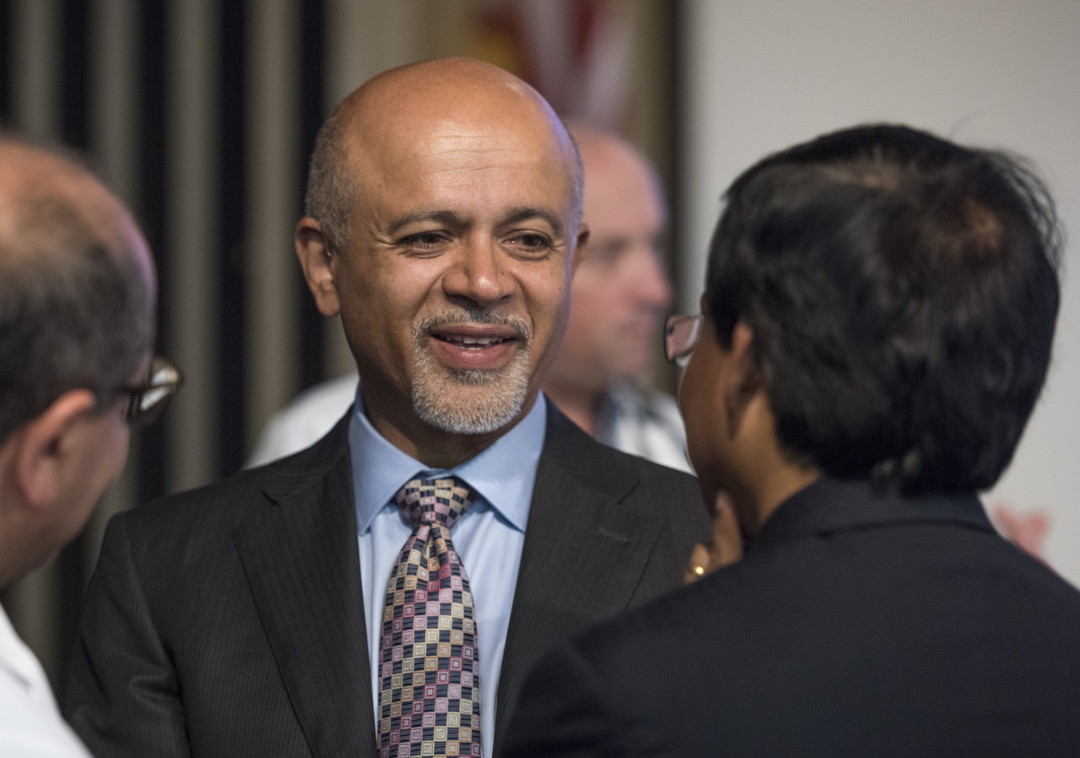
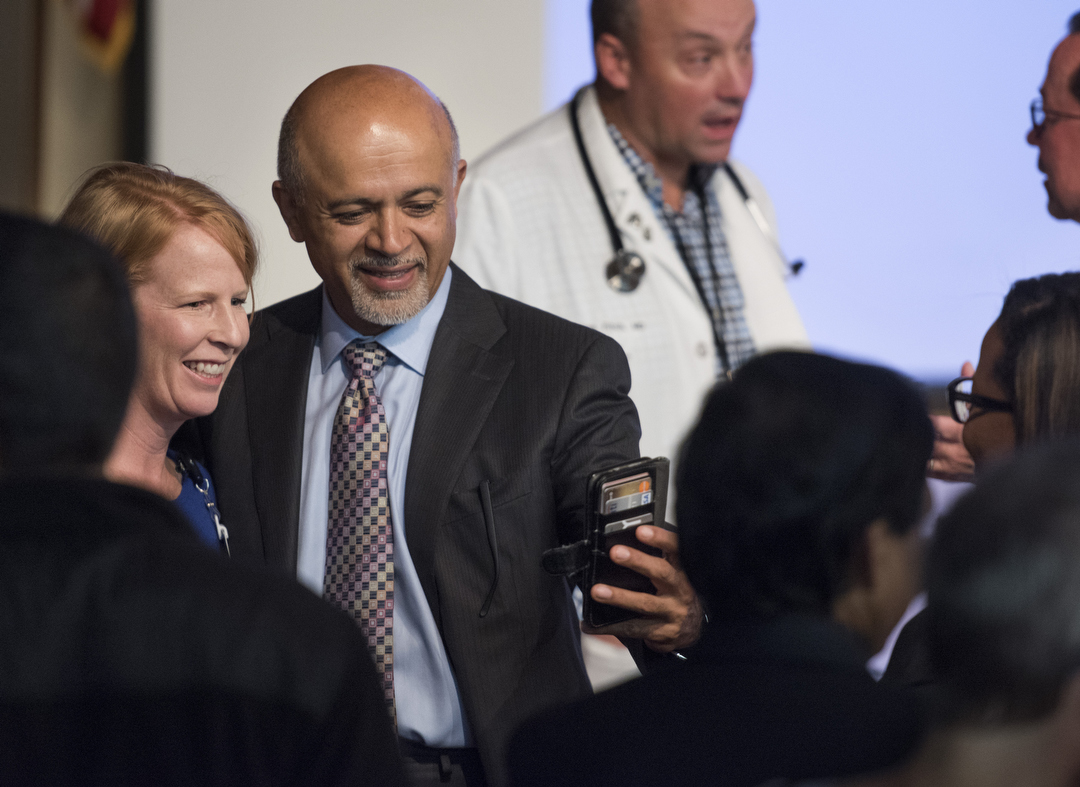
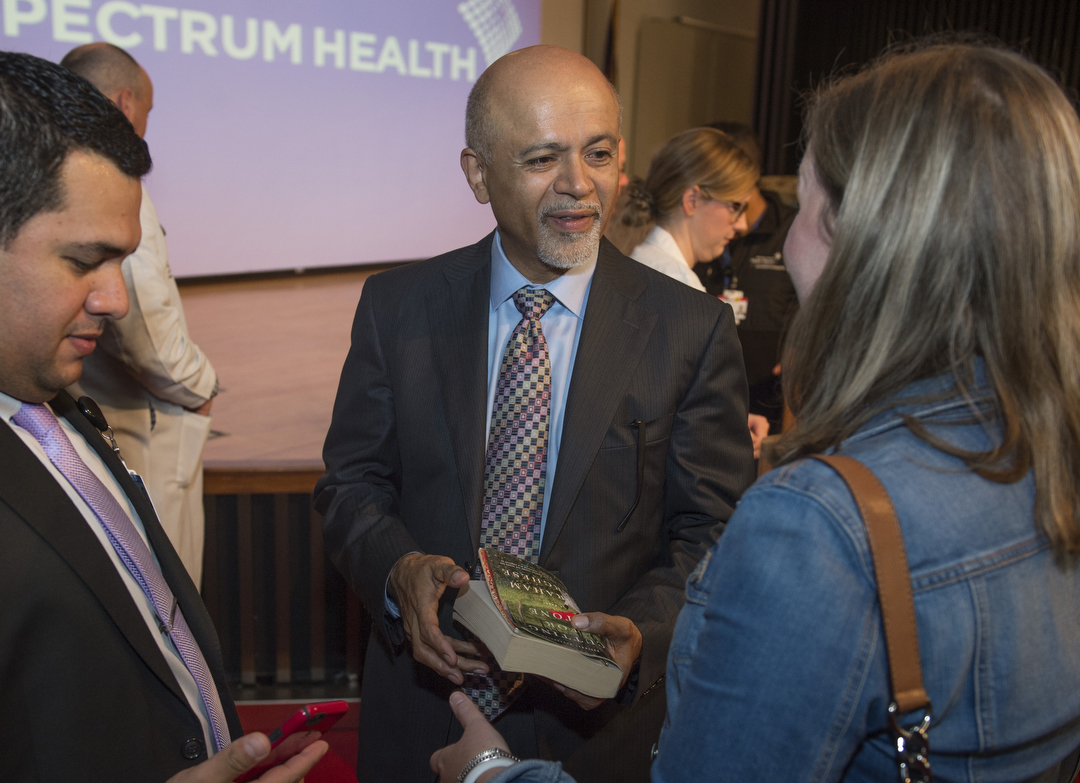



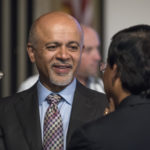

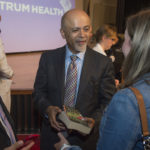
 /a>
/a>
 /a>
/a>
 /a>
/a>
God Bless you for bringing this very important subject to light! I think too many physicians underestimate the power of compassion in patient care. I have seen this firsthand and it makes all the difference in the world to find a physician who cares about you and actually listens to you.
Thank you, Stephanie. Dr. Verghese drew quite a crowd, and it’s easy to see why. He is a great and inspiring speaker.